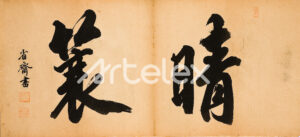Lee Si-young (1869 – 1953) was the first Vice President of South Korea and a prominent independence activist who played a significant role from the late Joseon period, through the Japanese occupation, and up to the establishment of the South Korean government.
Born into a noble family as the fifth son among six brothers, Lee passed the national civil service examination and served in various high-ranking positions, including Governor of Pyeongan Province and Chief Judge of the Hansung Court.
After the annexation of Korea by Japan in 1910, Lee rejected Japanese overtures and, along with his brothers, sold all their properties and relocated to Manchuria.
There, they established the Shinheung Military Academy to train independence fighters.
However, when the independence movement in Manchuria faced difficulties, Lee moved to Shanghai, China, where he joined the Provisional Government of the Republic of Korea and the Korean Independence Party.
During this period, he held various key positions, including Minister of Justice, Minister of Finance, and Chairman of the Inspection Committee, leading the independence movement.
All of his brothers died during the struggle for independence, some from torture, illness, or starvation, but Lee was the only one to survive and witness Korea’s liberation.
After the liberation, Lee supported the establishment of a separate government, contrary to leaders like Kim Gu, and thus gained the support of Syngman Rhee, which led to his election as the first Vice President of South Korea. However, during the Korean War,
Lee fled to Busan, and after witnessing the National Defense Corps incident, he became disillusioned with Rhee’s government and resigned from the Vice Presidency, retiring from politics.


